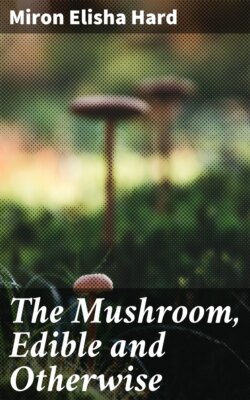Читать книгу The Mushroom, Edible and Otherwise - Miron Elisha Hard - Страница 29
На сайте Литреса книга снята с продажи.
Amanita strobiliformis. Fr.
ОглавлениеTable of Contents
The Fir-cone Amanita.
Plate III. Figure 22.—Amanita strobiliformis.
Young plant showing veil covering the entire gill-surface of the plant. Cap covered with persistent warts, stem rough and rooting, odor strong of chloride of lime.
Plate IV. Figure 23.—Amanita strobiliformis.
Showing long root.
Strobiliformis means fir-cone form; so called from the similarity of its undeveloped form to that of the strobile of the pine.
The pileus is six to eight inches broad, when young, subglobose, then convex, expanded, nearly plane, with persistent warts, white, ash-color, sometimes yellow on the cap, the margin even and extending beyond the gills; warts hard, angular, pointed, white; flesh white, compact.
The gills are free, crowded, rounded, white, becoming yellow.
The stem is five to eight inches long, frequently longer, tapering upward, floccosely scaly, bulbous, rooting beyond the bulb; ring large, torn; volva forming concentric rings. The spores are 13–14×8–9µ.
This is one of the most stately plants in the woods. It is said to be edible, but the strong pungent odor, like chloride of lime, has deterred me from eating it. This, however, is said to disappear in cooking. It grows to be very large. Dr. Kellerman and I found a specimen in Haynes's Hollow whose stem measured over eleven inches, and cap nine inches. It is found in open woods and wood margins. Great caution should be used before the plant is eaten to know it beyond doubt. Found July to October.
